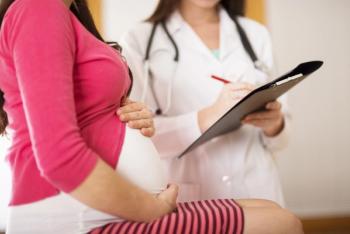
HPV vaccination rates are rising but have far to go
Despite controversy surrounding the human papillomavirus (HPV) vaccine, more adolescents and young adults are getting vaccinated. However, overall vaccination rates of HPV compared with other teenaged-years vaccines are still low, says the Centers for Disease Control and Prevention (CDC).
Despite controversy surrounding the human papillomavirus (HPV) vaccine, more adolescents and young adults are getting vaccinated. However, overall vaccination rates of HPV compared with other teenaged-years vaccines are still low, says the Centers for Disease Control and Prevention (CDC).
The CDC outlined the progress made in HPV vaccination rates in a
The CDC's Emiko Y. Petrosky, MD, MHP, lead author of the report, says that HPV vaccination rates remain low for both males and females. Whereas vaccination rates have increased significantly in females aged 13 to 26, there has not been an increase among 11- and 12-year-olds-the target age group for the vaccine.
"Our data on HPV vaccine coverage are generally consistent with those of other national surveys for 13- to 26-year-olds but lower than recent studies of 11- to 12-year-olds," Petrosky says. "To put this into context, 80% to 90% of 13- to 17-year-olds have received the other vaccines recommended for teens to protect against meningitis and pertussis, but only about half of girls had started the HPV vaccine series during this time period."
The HPV vaccine can provide effective, safe, and long-lasting protection against cancers caused by HPV infections, and the CDC has simplified the vaccination schedule so that just 2 doses are needed for 11- and 12-year olds, Petrosky says.
Human papillomavirus is the most common sexually transmitted infection in the United States and can cause certain cancers. It affects 39.5 million women aged 14 to 59 years, according to the CDC, with a prevalence of 32.9% among 14- to 19-year-olds and 56.8% among 20- to 24-year-olds.
The Advisory Committee on Immunization Practices (ACIP) first recommended routine HPV vaccination for girls aged 11 to 26 years in 2006, and the recommendation was extended to boys aged 11 through 21 years in 2011. The CDC also recommends that men who have sex with men, and men through age 26 years who are immunocompromised also receive the vaccine.
Despite strong recommendations, however, vaccination uptake has been slow, and rates are lower than that of other adolescent-aged vaccines, according to the CDC.
The study evaluated data on HPV vaccinations and sexual health from the National Health and Nutrition Examination Survey to determine how many teenagers and young adults were receiving the HPV vaccine, as well as the age at which patients received their first dose of the vaccine and at what age they had their first sexual encounter.
Sixty percent of girls and 41.7% of boys aged 13 to 17 years received 1 or more doses of the vaccine, but in contrast, 87.6% and 79.3% in the same age group receive the tetanus, diphtheria, and acellular pertussis (Tdap) and meningococcal conjugate (Men ACWY) vaccines, respectively.
Incidence of HPV is high among teenagers and young adults in the first few years following the start of sexual activity, and the delay that is occurring in many adolescents in this age group leaves them vulnerable to infection, according to the CDC.
"In a recent study of a large urban population of females aged 11 to 19 years receiving their first dose of HPV vaccine, more than one-third had already undergone screening [for sexually transmitted disease (STD)], suggesting prior sexual experience, and nearly one-third of those with cervical cancer screening already had an abnormal result, suggesting prior exposure to HPV," the study notes.
Throughout the study period, vaccination rates improved, although increases were more significant in older patient populations. According to the report, 16.4% of 11- and 12-year-olds were vaccinated with 1 or more doses of the HPV vaccine in the 2007 to 2010 period compared with 22.3% in the 2011 to 2014 period. Similarly, vaccination rates increased from 30.6% to 53.2% among 13- to 17-year-olds, and from 19.2% to 39.9% in 18- to 26-year-olds. Similar patterns were observed in those populations for individuals receiving 3 doses of the vaccine, according to the CDC, with an increase from 5.4% to 6.4% across the study period in 11- to 12-year-olds; from 17.2% to 33.8% in 13- to 17-year-olds; and from 10.6% to 24.9% in 18- to 26-year-olds.
In males, vaccination rates from 2011 to 2014 for those receiving 1 or more doses were 19.4% in 11- to 12-year-olds, 20.2% in 13- to 17-year-olds, and 15.3% in 18- to 26-year-olds. For those receiving 3 or more doses, rates were 5.8% in 11- to 12-year-olds, 9.5% in 13- to 17-year-olds, 7.3% in 18- to 21-year-olds, and 3.2% in 22- to 26-year-olds.
Vaccination rates varied by race and ethnicity from 2007 to 2010, with coverage being the highest among non-Hispanic blacks at 30.5%, and lowest among non-Hispanic whites at 9%. However, the CDC says there were no significant race and ethnicity variations in the 2011 to 2014 study period.
Other changes across the study period occurred in relation to insurance coverage. According to the CDC, vaccination rates didn't vary by health insurance type in the first study period from 2007 to 2010, but did in the later period from 2011 to 2014, during which time the highest vaccination rates were among those with private and public health benefits and the lowest rates among those with no health insurance.
In terms of age at first sexual activity, the study found that 43.1% of females who reported the age of their first HPV vaccine dose received the vaccine after or in the same year as their first sexual encounter. Non-Hispanic blacks (52.5%) were mostly likely to report sexual activity before the first vaccine dose, followed by non-Hispanic whites (42.2%), Mexican Americans (33.3%), and Asians (30.9%).
Ms Zimlich is a freelance writer in Cleveland, Ohio, contributing regularly to Contemporary Pediatrics, Managed Healthcare Executive, and Medical Economics. She has nothing to disclose in regard to affiliations with or financial interests in any organizations that may have an interest in any part of this article.
Newsletter
Access practical, evidence-based guidance to support better care for our youngest patients. Join our email list for the latest clinical updates.

![Jodi Gilman, PhD, on cumulative prenatal adversity linked to adolescent mental health risk Document Jodi Gilman, PhD, on cumulative prenatal adversity linked to adolescent mental health risk Live? Do you want this document to be visible online? Scheduled Publishing Exclude From Home Page Do you want this document to be excluded from home page? Exclude From Infinite Scroll Do you want this document to be excluded from infinite scroll? Disable Related Content Remove related content from bottom of article. Password Protection? Do you want this gate this document? (If so, switch this on, set 'Live?' status on and specify password below.) Hide Comments [Experiment] Comments are visible by default. To hide them for this article toggle this switch to the on position. Show Social Share Buttons? Do you want this document to have the social share icons? Healthcare Professional Check Is Gated [DEV Only]Do you want to require login to view this? Password Password required to pass the gating above. Title Jodi Gilman, PhD, on cumulative prenatal adversity linked to adolescent mental health risk URL Unique identifier for this document. (Do not change after publishing) jodi-gilman-phd-on-cumulative-prenatal-adversity-linked-to-adolescent-mental-health-risk Canonical URL Canonical URL for this document. Publish Date Documents are usually sorted DESC using this field. NOTE: latency may cause article to publish a few minutes ahead of prepared time 2026-01-19 11:52 Updated On Add an updated date if the article has been updated after the initial publish date. e.g. 2026-01-19 11:50 Article Type News Display Label Author Jodi Gilman, Phd > Gilman, Jodi Author Fact Check Assign authors who fact checked the article. Morgan Ebert, Managing Editor > Ebert, Morgan Content Category Articles Content Placement News > Mental, Behavioral and Development Health > Clinical AD Targeting Group Put the value only when the document group is sold and require targeting enforcement. Type to search Document Group Mapping Now you can assign multiple document group to an article. No items Content Group Assign a content group to this document for ad targeting. Type to search Issue Association Please choose an issue to associate this document Type to search Issue Section Please choose a section/department head if it exists Type to search Filter Please choose a filter if required Type to search Page Number Keywords (SEO) Enter tag and press ENTER… Display summary on top of article? Do you want display summary on top of article? Summary Description for Google and other search engines; AI generated summary currently not supporting videos. Cumulative prenatal adversities were linked to higher adolescent mental health risk, highlighting the importance of prenatal history and early clinical monitoring. Abstract Body *********************************************************************************************************** Please include at least one image/figure in the article body for SEO and compliance purposes ***********************************************************************************************************](https://cdn.sanity.io/images/0vv8moc6/contpeds/e6097cb5e6d6c028c0d4e9efd069e69fdab6d00b-1200x628.png?w=350&fit=crop&auto=format)






